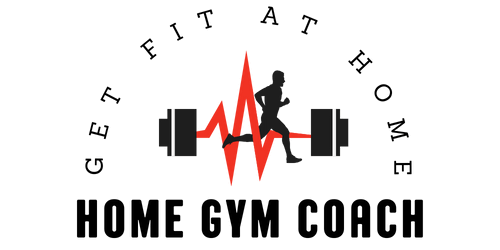If you’ve been on a never-ending quest to find the perfect workout routine that fits your needs and goals, look no further. Get ready to take your fitness journey to the next level with the help of custom workout plans designed specifically for High Intensity Interval Training (HIIT). Whether you’re a beginner looking to shed some pounds or a seasoned fitness enthusiast aiming to boost your performance, these personalized workout plans are tailored to your unique abilities and preferences. Say goodbye to generic workouts and hello to a fitness regimen that works for you.

Benefits of High Intensity Interval Training (HIIT)
Improved cardiovascular fitness
High Intensity Interval Training (HIIT) is known for its ability to improve cardiovascular fitness. By alternating between intense bursts of exercise and short recovery periods, HIIT workouts challenge your heart and lungs to work harder and become more efficient. This can lead to increased endurance, improved oxygen delivery to your muscles, and a reduced risk of cardiovascular diseases.
Increased calorie burn
One of the major benefits of HIIT is its ability to help you burn calories efficiently. The intense nature of HIIT workouts stimulates your metabolism, leading to an increased calorie burn both during and after your workout. This is known as the “afterburn” effect, where your body continues to burn calories at a higher rate even after you’ve finished exercising. Incorporating HIIT into your fitness routine can help you achieve your weight loss goals more effectively.
Time efficiency
In today’s fast-paced world, finding time to exercise can be a challenge. The beauty of HIIT is that it offers maximum results in minimum time. Traditional steady-state cardio workouts can take up to an hour, while a HIIT workout can be completed in as little as 15-20 minutes. The high-intensity nature of HIIT allows you to get your heart rate up quickly and effectively, making it ideal for those with busy schedules. With HIIT, you can get a full-body workout in a short amount of time, making it easier to stick to your fitness goals.
Considerations for Designing Custom HIIT Workouts
Fitness level
When designing a custom HIIT workout plan, it’s important to consider your fitness level. HIIT workouts can be intense, so it’s crucial to start at a level that is appropriate for your current fitness abilities. Beginners should start with shorter work periods and longer rest periods, gradually increasing the intensity and duration as they progress. Intermediate and advanced individuals can incorporate more challenging exercises and shorter rest periods to continue challenging their bodies.
Time availability
Another important consideration when designing a custom HIIT workout plan is your time availability. HIIT workouts are designed to be time-efficient, but you still need to allocate a certain amount of time for each session. Determine how many days per week you can commit to HIIT training and plan your workouts accordingly. If you have limited time, shorter HIIT workouts can still be effective. It’s about finding a balance that fits into your schedule while still allowing you to reap the benefits of HIIT.
Goals and preferences
Your personal goals and preferences should also be taken into account when creating a custom HIIT workout plan. If your main goal is fat loss, a HIIT workout with more cardio-focused exercises may be suitable. On the other hand, if you’re looking to build muscle and strength, incorporating resistance exercises into your HIIT routine would be beneficial. Additionally, consider the types of exercises you enjoy and are willing to do consistently. HIIT workouts should be challenging, but they should also be enjoyable to help you stay motivated and engaged.

Components of a HIIT Workout
Warm-up
A proper warm-up is essential before diving into a HIIT workout. It helps prepare your body for the intense exercise ahead and reduces the risk of injury. A dynamic warm-up, consisting of movements that mimic the exercises in your workout, is ideal for HIIT. This can include exercises like jumping jacks, high knees, and arm circles. Aim for a 5-minute warm-up to get your blood flowing and your muscles warmed up.
Interval workouts
The heart of a HIIT workout lies in the intervals. This is where you alternate between periods of high-intensity exercise and short rest or recovery periods. The length and intensity of each interval depend on your fitness level and goals. Beginners may start with shorter work intervals (e.g., 20 seconds) and longer rest periods (e.g., 40 seconds), while advanced individuals may opt for longer work intervals (e.g., 45 seconds) and shorter rest periods (e.g., 15 seconds).
Recovery periods
Recovery periods are crucial in HIIT workouts. They allow your body to recover from the intense exercise and prepare for the next interval. Active recovery, such as walking or jogging at a slower pace, is recommended during the rest periods. The duration of the recovery periods will depend on your fitness level and the intensity of the work intervals. Beginners may require longer recovery periods, while advanced individuals can shorten the rest periods to maintain a higher intensity throughout the workout.
Cool-down
Just as a warm-up is important, so is a cool-down to gradually bring your heart rate back to normal and prevent muscle soreness. A cool-down for a HIIT workout can include static stretches, such as hamstring stretches and chest stretches. Aim for a 5-minute cool-down to allow your body to recover and ease any post-workout muscle tightness.
Designing a HIIT Workout Plan
Determining workout frequency
The frequency of your HIIT workouts will depend on your goals, fitness level, and time availability. Beginners may start with 2-3 HIIT sessions per week, allowing for adequate recovery between workouts. Intermediate and advanced individuals can gradually increase the frequency to 4-5 sessions per week, keeping in mind the importance of rest and recovery. It’s important to listen to your body and avoid overtraining, as this could lead to increased risk of injury and decreased performance.
Setting workout duration
The duration of your HIIT workouts will depend on your fitness level and goals. Beginners may start with 15-20 minute sessions, gradually working their way up as they build endurance and fitness. Intermediate and advanced individuals can aim for 20-30 minute sessions or longer, depending on their fitness capabilities. Remember, the intensity of the workout is more important than the duration. Focus on pushing yourself during the work intervals rather than prolonging the session unnecessarily.
Choosing exercises
When it comes to choosing exercises for your HIIT workouts, it’s important to select those that target different muscle groups and elevate your heart rate. A combination of cardio exercises, such as sprints, jumping jacks, and burpees, along with resistance exercises, like squats, lunges, and push-ups, can create a well-rounded HIIT workout. Incorporating a variety of exercises not only challenges your body but also keeps your workouts interesting and engaging.
Planning intervals and rest periods
Interval and rest periods are the key to an effective HIIT workout. Beginners can start with shorter work intervals (e.g., 20 seconds) and longer rest periods (e.g., 40 seconds) to allow for recovery. As your fitness level improves, gradually decrease the rest periods and increase the work intervals to make the workout more challenging. Advanced individuals may opt for longer work intervals (e.g., 45 seconds) and shorter rest periods (e.g., 15 seconds). Experiment with different combinations and listen to your body to find the intervals and rest periods that work best for you.

Sample HIIT Workout Plan for Beginners
5-minute warm-up (dynamic stretches)
Start your HIIT workout with a dynamic warm-up to prepare your body for the intense exercise ahead. Perform exercises such as arm circles, leg swings, and torso rotations to loosen up your muscles and increase your range of motion.
20 seconds of sprinting on a treadmill
After warming up, go all out for 20 seconds of intense sprinting on a treadmill. Push yourself to reach your maximum effort during this time.
40 seconds of walking recovery
Following the sprint, allow your body to recover by walking on the treadmill at a slower pace for 40 seconds. This active recovery period allows your heart rate to decrease slightly while still keeping your body in motion.
Repeat for 15 minutes
Repeat the cycle of 20 seconds of sprinting followed by 40 seconds of walking recovery for a total of 15 minutes. As you progress, you can increase the duration of the workout or the intensity of the sprinting intervals.
5-minute cool-down (static stretches)
Complete your workout with a 5-minute cool-down consisting of static stretches. Focus on stretching the major muscle groups, holding each stretch for 15-30 seconds to improve flexibility and aid in recovery.
Sample HIIT Workout Plan for Intermediate Level
5-minute warm-up (cardio exercises)
Begin your HIIT workout with a 5-minute warm-up that includes cardio exercises such as jumping jacks, high knees, and butt kicks. This helps elevate your heart rate and prepare your body for intense exercise.
30 seconds of burpees
Perform burpees for 30 seconds, aiming to complete as many repetitions as possible within the allotted time. Burpees are a full-body exercise that targets multiple muscle groups and elevates your heart rate.
30 seconds of mountain climbers
Switch to mountain climbers for the next 30 seconds. Get into a plank position and alternate bringing your knees towards your chest, simulating a climbing movement. This exercise engages your core, shoulders, and legs while providing a cardiovascular challenge.
30 seconds of high knee running
Continue the circuit by performing high knee running for 30 seconds. Lift your knees up towards your chest as you jog in place, making sure to maintain an upright posture and engage your core muscles.
30 seconds of jumping jacks
Wrap up the circuit with 30 seconds of jumping jacks. Stand with your feet together, then jump while simultaneously spreading your legs and raising your arms above your head. These provide a full-body workout, helping to improve coordination and cardiovascular endurance.
Repeat circuit 3-4 times
Complete the entire circuit of exercises (burpees, mountain climbers, high knee running, and jumping jacks) and repeat it for a total of 3-4 times. Take short breaks between each circuit if needed, but aim to maintain a high level of intensity throughout.
5-minute cool-down (yoga stretches)
End your HIIT workout with a 5-minute cool-down that incorporates yoga stretches. Focus on stretching the muscles you worked during the circuit, holding each stretch for 15-30 seconds to aid recovery and promote flexibility.

Sample HIIT Workout Plan for Advanced Level
5-minute warm-up (agility drills)
Begin your advanced level HIIT workout with a 5-minute warm-up that includes agility drills such as ladder drills or cone drills. These exercises help improve coordination, speed, and agility while warming up your muscles.
20 seconds of kettlebell swings
Perform kettlebell swings for 20 seconds, using a weight that challenges you but allows you to maintain proper form. Engage your core, hinge at the hips, and swing the kettlebell between your legs, then powerfully drive your hips forward to propel the kettlebell up to chest height.
10 seconds of rest
Take a short 10-second rest to allow your body to recover before moving on to the next exercise.
20 seconds of box jumps
Perform explosive box jumps for 20 seconds, jumping onto a sturdy elevated platform and landing softly with bent knees. Make sure to use proper form and focus on height and control with each jump.
10 seconds of rest
Take another brief 10-second rest to recover before the next exercise.
20 seconds of battle ropes
Grab a set of battle ropes and perform waves or slams for 20 seconds. This exercise engages your upper body and core muscles while providing a high-intensity cardio challenge.
10 seconds of rest
Allow yourself a short 10-second rest before repeating the circuit.
Repeat for 20 minutes
Repeat the circuit of kettlebell swings, box jumps, and battle ropes for a total of 20 minutes. Adjust the weight and intensity as needed, pushing yourself to maintain a high level of effort throughout the workout.
5-minute cool-down (foam rolling)
End your advanced HIIT workout with a 5-minute cool-down that includes foam rolling. Foam rolling helps relieve muscle tension and promotes recovery by releasing tight spots and improving blood flow to your muscles. Roll out each major muscle group, spending extra time on areas that feel particularly tight or sore.
Adjusting and Progressing Your HIIT Workouts
Increasing intensity
As you become more comfortable with your HIIT workouts, you can gradually increase the intensity to continue challenging your body. This can be done by increasing the speed or resistance of the exercises, reducing rest periods, or incorporating more advanced movements. It’s important to listen to your body and avoid pushing yourself too hard too soon, as this can lead to overtraining and increased risk of injury.
Modifying intervals and rest periods
To continue progressing your HIIT workouts, you can modify the intervals and rest periods according to your goals and fitness level. Increase the duration of the work intervals and decrease the rest periods to create a more challenging workout. Alternatively, you can experiment with different interval ratios, such as 30 seconds of work followed by 20 seconds of rest, to keep your body guessing and prevent plateaus.
Incorporating resistance training
Adding resistance exercises to your HIIT workouts can enhance the overall benefits and help you build strength and muscle. Incorporate exercises such as squats, lunges, push-ups, or kettlebell swings into your workouts. These exercises engage multiple muscle groups and increase the intensity of your HIIT sessions.
Adding advanced exercises
Once you’re comfortable with the basic HIIT exercises, you can start adding more advanced movements to further challenge your body. Exercises like plyometric jumps, burpee variations, or handstand push-ups can be incorporated to take your HIIT workouts to the next level. Make sure to master proper form and progress gradually to avoid injuries.
Monitoring Progress and Evaluating Results
Tracking workout performance
To gauge your progress and evaluate the effectiveness of your HIIT workouts, it’s important to track your performance. Keep a record of metrics such as work interval duration, rest interval duration, number of repetitions, or weight used. This allows you to see improvements over time and adjust your workouts accordingly.
Measuring fitness improvements
In addition to tracking your workout performance, you can also measure your fitness improvements by assessing other factors. This can include measuring your resting heart rate, monitoring your recovery time after intense exercise, or assessing changes in body composition. Regular fitness assessments can help you stay motivated and track the positive impact that HIIT is having on your overall fitness level.
Revising workout plans
As you progress and your fitness level improves, it’s important to revise your workout plans to continue challenging your body and avoiding plateaus. Increase the intensity, duration, or complexity of your exercises to ensure continued progress and prevent boredom. Consulting with a fitness professional can also provide valuable insights and help you design new and challenging HIIT workouts tailored to your specific goals and needs.
Essential Tips for Effective HIIT Training
Maintain proper form
Proper form is crucial for effective and safe HIIT training. Always prioritize technique over speed or intensity. Focus on executing each exercise with correct form and proper alignment to prevent injuries and maximize the benefits of the exercise.
Listen to your body
Listen to your body and adjust your workouts accordingly. If you feel excessive fatigue, pain, or discomfort, it’s important to modify the exercise or reduce the intensity. Pushing through pain can lead to injuries and hinder your progress. Make modifications or take rest days when needed to allow your body to recover and prevent overtraining.
Stay consistent
Consistency is key when it comes to HIIT training. Aim for regular workouts, sticking to your predetermined schedule as closely as possible. Consistency helps build momentum, improves fitness levels, and increases the likelihood of achieving your goals.
Fuel your body with nutritious foods
Proper nutrition plays a crucial role in supporting your HIIT workouts. Fuel your body with a balanced diet that includes lean proteins, whole grains, fruits, vegetables, and healthy fats. Make sure to consume enough calories to support your energy needs and make healthy food choices that provide the necessary nutrients for recovery and muscle growth.
Stay hydrated
Hydration is essential for optimal performance during HIIT workouts. Drink water before, during, and after your workouts to maintain adequate hydration levels. As the intensity of your workouts increases, your body will lose more fluids through sweat, so it’s important to replenish those fluids to avoid dehydration. Carry a water bottle with you and sip on water frequently throughout your exercise session.
By following these tips and incorporating a well-designed HIIT workout plan into your fitness routine, you can maximize the benefits of HIIT and achieve your health and fitness goals. Remember to always consult with a healthcare or fitness professional before starting any new exercise program, especially if you have any pre-existing medical conditions or concerns. Stay consistent, push yourself within your abilities, and enjoy the many advantages that HIIT has to offer.


